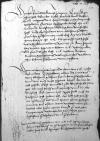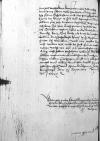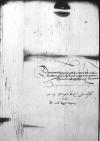List #5007
Albrecht I von Hohenzollern-Ansbach do Ioannes DANTISCUSKönigsberg (Królewiec), 1540-09-11
| odebrano Heilsberg (Lidzbark Warmiński), 1540-09-12 Rękopiśmienne podstawy źródłowe:
Publikacje:
| ||||||||
Tekst + aparat krytyczny + komentarz Zwykły tekst Tekst + komentarz Tekst + aparat krytyczny
Dem erwirdigenn ÿn Gott unnserm besonndernn liebenn freundt unnd nachparnn herren
Unnser freuntlich diennst zuvornn. /
Erwirdiger yhnn Gott, besonnder lieber freundt unnd nachbar. /
E(uer) L(ieb) mögenn wir freuntlicher meÿnung nicht verhaltenn, / das uns beÿligende brieff ahn E(uer) L(ieb) lautende, / kurtzverruckter tag vom koniglichen hoff auss
Vonn newenn zceittungenn wissenn wir E(uer) L(ieb) nichts besonnders zuschreÿbenn, / allain das (wie uns vonn etlichenn guttenn freundenn zugeschrieben / unnd uns auch unser eÿgener diener den wir der ortt gehabt / selbest vormeltt)
Hienebenn zweÿfelenn wir nitt E(uer) L(ieb) sey unverporgenn / wie  BCz, 1606, p. 504 ynn Gott vorscheidenn, / dero seelenn der allmechtig unnd unns allenn wolle genedig unnd barmhertzig seÿnn, / dessgleichenn mitt was herligkeÿtt und erenn ire konig(lich)e w(irt) zur wild begangenn. / Nun sollenn sich ynn
BCz, 1606, p. 504 ynn Gott vorscheidenn, / dero seelenn der allmechtig unnd unns allenn wolle genedig unnd barmhertzig seÿnn, / dessgleichenn mitt was herligkeÿtt und erenn ire konig(lich)e w(irt) zur wild begangenn. / Nun sollenn sich ynn
Dat(um)
Vonn Gotts gnaden


